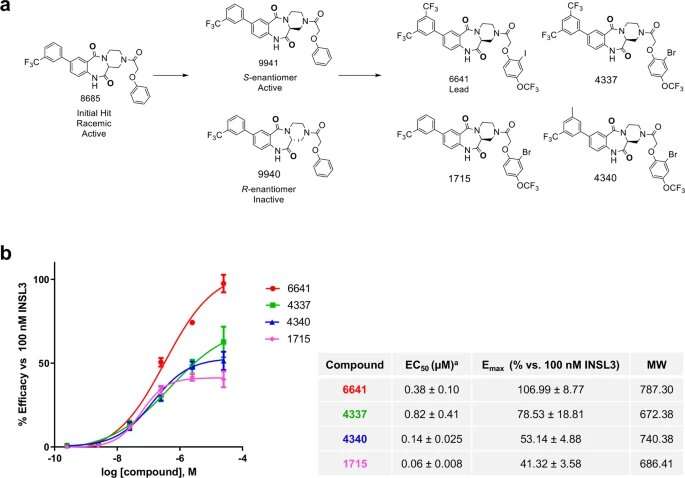This article has been reviewed according to Science X's editorial process and policies. Editors have highlighted the following attributes while ensuring the content's credibility:
fact-checked
peer-reviewed publication
trusted source
proofread
Researchers pinpoint new method to help bone-producing cells make more bone

Reversing osteoporosis could one day be as easy as taking a pill.
A team of Florida International University (FIU) drug development scientists has found a possible new way to counteract the effects of the disease that turns bones into honeycomb-like structures—so fragile even a cough can cause a fracture or break. The discovery, recently published in Communications Biology, is the first step toward cheaper, effective, easy-to-take treatments for osteoporosis and other diseases associated with bone loss.
Currently available drugs only stop bone loss and require expensive daily injections. Researchers from FIU's Herbert Wertheim College of Medicine—along with a collaborative team from the National Center for Advancing Translational Sciences (NCATS), part of the National Institutes of Health (NIH), and University of Arkansas for Medical Sciences—identified a method that can be taken orally and helps bone-producing cells make more bone.
"Our experiments in the lab showed small molecule activators delivered orally improve bone density, an exciting discovery that could lead to a new treatment for osteoporosis," said study author Alexander Agoulnik, FIU professor and interim chair of the Department of Human and Molecular Genetics.
Bones are essentially always under renovation. Cells break down and reform bone around the clock. Bone-making cells build bone tissue, while bone-eating ones reabsorb it to keep bones from getting too big or bulky. It's a delicate dance, and it goes awry during osteoporosis when bone-making cells slow down and bone-eating cells keep at a steady pace.
To help bone-producing cells keep up, the researchers focused on a specific target: a hormone receptor called relaxin family peptide receptor 2 (RXFP2), known to play a role in the formation of reproductive organs.
"When we first screened patients with cryptorchidism, or undescended testes, we found in some of them this receptor was mutated," Agoulnik said. "Then, colleagues from the University of Padova, Italy, surprisingly discovered that a significant portion of these men also happened to have osteoporosis."
The team suspected the receptor also had something to do with bone development. Further research revealed that it did.
The team first had to pinpoint the right chemical compound to activate the receptor. The NCATS team used robots to screen for small molecules among more than 80,000 different compounds. Chemists then tested hundreds more variations until they found the right match. It was like a key fitting a lock. When they tested it on mouse models in the lab, they saw an improvement in bone density.
"This opens up a new area of study to allow for clinical application to prevent or reverse osteoporosis," said Maria Esteban Lopez, who worked with Agoulnik on this research as an FIU biomedical sciences Ph.D.candidate. "This was an exciting opportunity. I was able to work with phenomenal scientists across various institutions and see how the impact of our work could lead to meaningful therapeutic breakthroughs."
Researchers know a new treatment could be life-changing for millions of people, and look forward to the next phase of research.
"Without collaboration, we would never have found the link between our genes and bone development. And the collaboration with NIH was crucial because they are the best in the field to look for the right compounds," Agoulnik said. "The main ingredient for success in science is collaboration."
More information: Maria Esteban-Lopez et al, Discovery of small molecule agonists of the Relaxin Family Peptide Receptor 2, Communications Biology (2022). DOI: 10.1038/s42003-022-04143-9
Journal information: Communications Biology
Provided by Florida International University
















